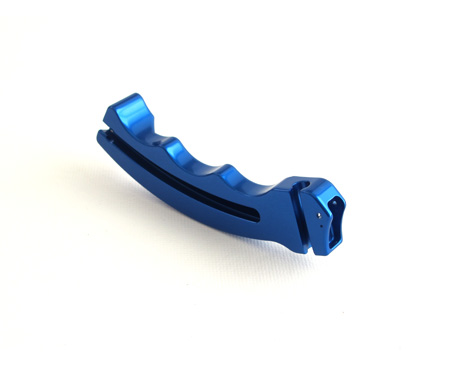Medical Coating of Medical Instruments and Equipment

Medical / Dental Applications
Medical coatings are essential for the absolute cleanliness and sterilization process of medical and surgical instruments.The medical industry utilizes a range of instruments, tools, accessories, and equipment used across a variety of procedures and within health service environments requiring sterility.Major areas where aluminum is commonly used for fabrication include orthopedic, endoscopic, craniomaxilofacial, spine, trauma, surgical instruments, and general hospital equipment. Aluminum is a material of choice because of its weight to strength ratio, a low manufacturing cost, its ability to be colored, and a high degree of thermal conductivity that eliminates water condensation after washing and drying. However, aluminum must be coated to passivate the surface to prevent uncontrolled corrosion, and this can be accomplished by both anodizing and hard coat anodic coatings, with the latter also providing a high degree of scratch and abrasion resistance. Anodizing and aluminum hard coat can be colored to enhance design factor and allow for easier identification. While the conventional types of anodizing are widely available, few anodizers are geared to meet the process controls required for medical manufacturing. Equally, the performance of conventional anodic coatings can be found lacking on key Purpose for Use parameters required for medical applications. Through innovative technology development and extensive application performance testing, DCHN has unique, high performance solutions for medical manufacturers.
General Needs
Medical equipment must be cleaned and sterilized on a regular basis and always between procedures. This can present problems for almost all medical coatings including aluminum coatings, anodic and polymeric coatings. With conventional anodic coatings, the coating colors can fade, the coating can be chemically attacked and dissolved, and the coating can continue to seal in autoclave sterilizers causing dye leaching as well as smutting on the parts surface. While more stable, polymeric coatings can lose adhesion to the substrate, causing blistering and chipping; and they are very hard to apply with consistent tolerances across all of the surface area.
Sanford Process Corporation, the sister company of DCHN, has developed a variety of innovative coating solutions for medical equipment which are available through DCHN.
Applications
Using Medical Coating for Aluminum Medical Products
Surgical Cases, Trays, and Containers: A major trend has been to organize the transportation and organization of medical equipment by procedure into kits. These cases enhance efficiency and lower costs, while reducing a number of systemic risks in an operating theater.
Surgical Instruments: The look and feel of aluminum, coupled with its strength, make it an ideal material for reusable medical instruments. Aluminum however is only used on the handle and or body of the instrument and not the tool itself.
Hospital Equipment: There is an endless variety of hospital equipment made out aluminum. A common theme nowadays is to eliminate sources of post-operation infection, and this in turn requires all hospital equipment to be disinfected or sterilized on a regular basis. Our MICRALOX® process is an excellent medical coating solution for this purpose.
Common Performance Requirements
Chemical Stability – The coating must perform across a range of chemical environments. Hardness – the coating requires a hard surface that protects the substrate from scratching, chipping, and abrasion.
Thermal Conductivity – Water is a conducive environment for breading pathogens so articles need to dry quickly. Having a high thermal conductivity can help to flash off water left on the surface of an article after washing.
Medical Product Decoration and Marking – All medical equipment needs to be traced back to manufacture to ensure that defective product can be quickly isolated and removed from service or to allow for a thorough investigation into poor quality. Furthermore, product engineers are increasingly choosing to put more information onto the product to facilitate its proper use while seeking ways to enhance design and product differentiation.
DCHN Solutions
MICRALOX – Microcrystalline anodizing for revolutionary chemical and corrosion resistance. ![]()
SANFORD PRINT – Embedded printing to eliminate delamination and print loss. AS100 – STERRAD Resistant Colors and Printing
MORE >


